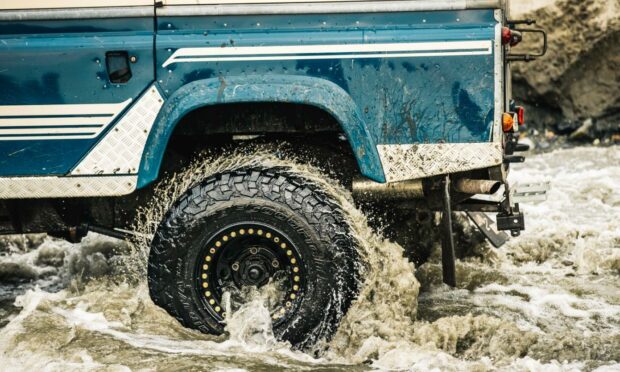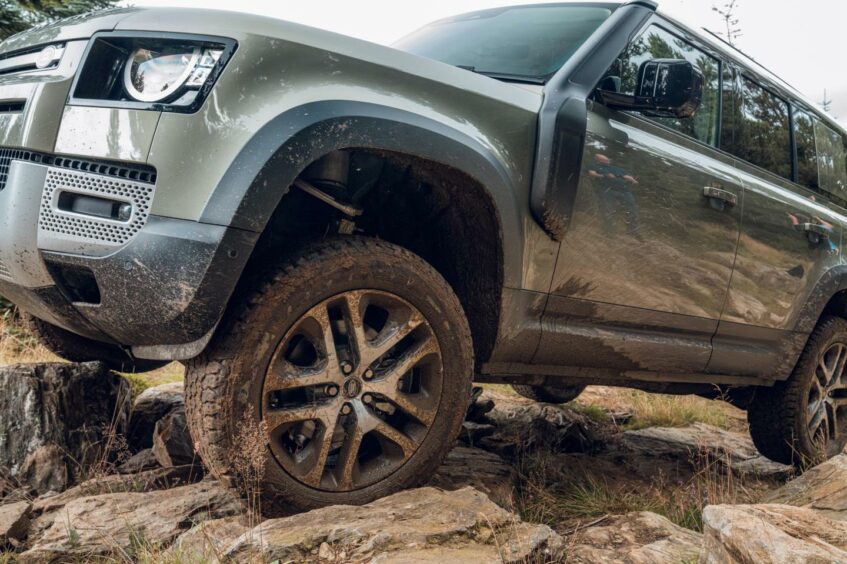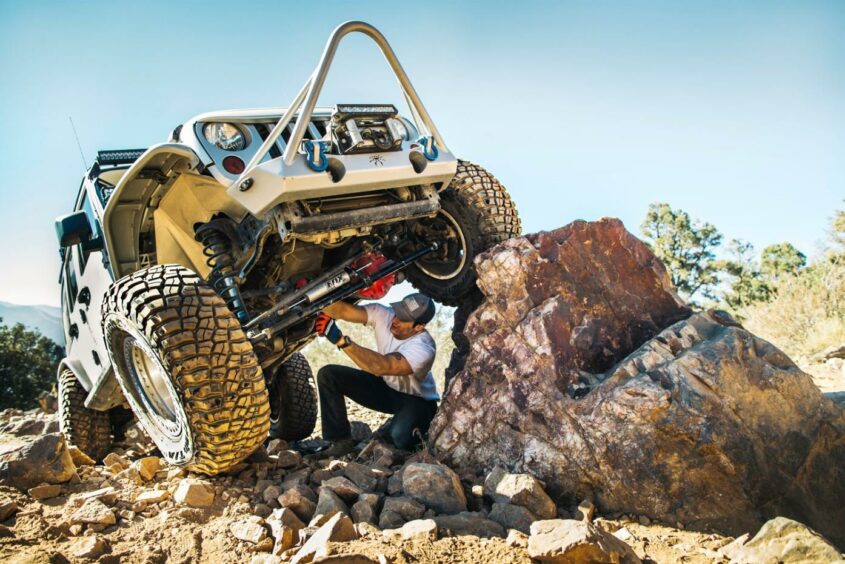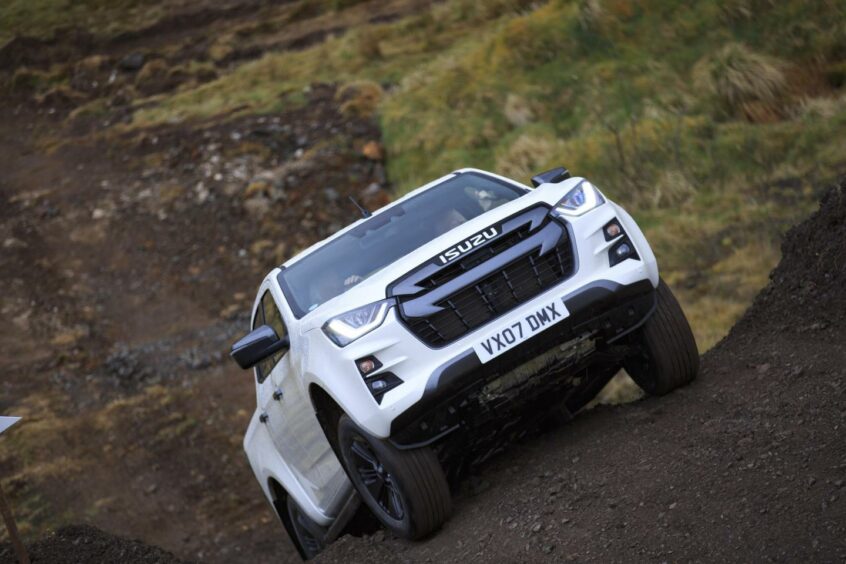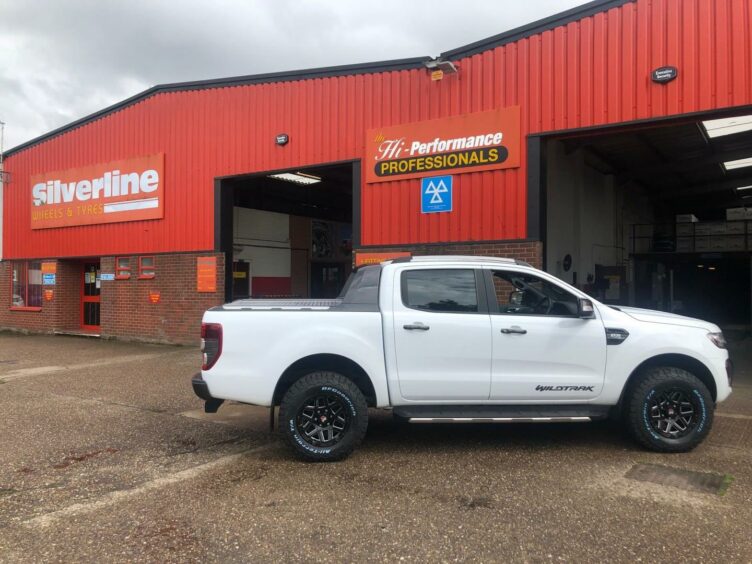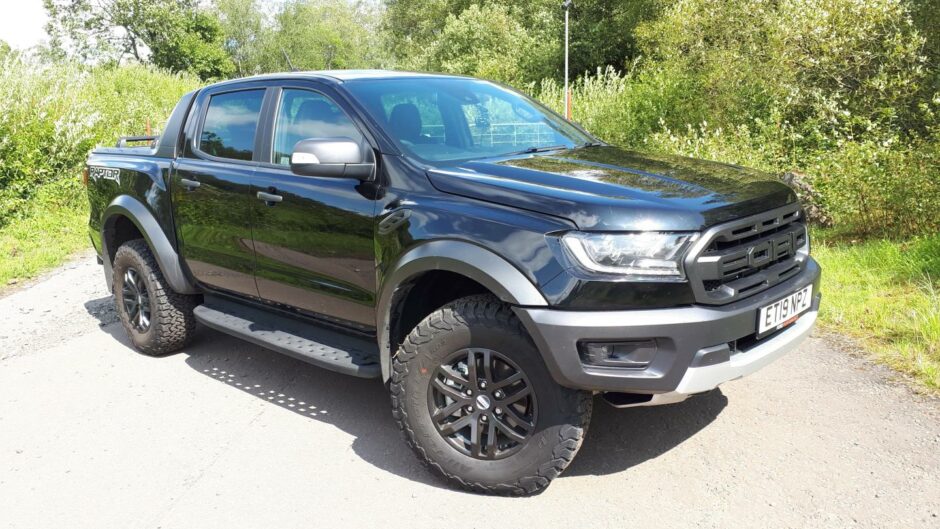Your car may have the latest technology with lots of fancy gizmos, but it’s worth remembering that the only things keeping you firmly attached to the road are your tyres.
It’s the same when you venture into the great outdoors. You’ll have to rely on your rubber to keep you going when the going gets tough in the wilds.
And there’s more to it than just slapping on a chunky set of black knobblys if you want your 4×4 to get you into the challenging backwoods and, importantly, back out again.
Tyres for all budgets
That’s particularly important at this time of year with the uncertain weather and demanding conditions that winter can bring.
Fortunately, there’s never been a better choice of off-road tyres, and with such a wide range of brands you can spend as little as £50 for a budget bargain or fork out near-enough £300 per wheel for the very best.
Serious off-roaders – the committed mug-pluggers – know the importance of a good tyre
It’s obvious, really, but you have to decide where you’re likely to be heading and what you want to do once you get there, and that will dictate the type of tyre you need and how much you’ll have to pay for it.
Serious off-roaders – the committed mug-pluggers – know the importance of a good tyre which will withstand the rigours of rough surfaces.
They’ll generally go for extreme examples like the KM3 produced by BF Goodrich, part of the giant Michelin empire, which is used by many utilities such as electricity or communications companies to get their crews and equipment to otherwise inaccessible places.
These top-of-the-range examples have a complex rubber compound and large tread blocks to push out mud to the side and stop it building up leading to a loss of traction.
With strengthened sidewalls, they can tolerate sharp rocks or damaging tree roots but while they are superb for challenging terrain, they can be noisy when used on tarmac surfaces, so you hear the machine coming before you see it.
Staycation boom drives up off-road tyre sales
The majority of BF Goodrich sales are of their All Terrain tyres, which appeal to the leisure buyers, including motorhome owners, who occasionally want to venture off the tarmac – but not too far – and spend half the time on it, so want something which will offer the best of both worlds.
BF Goodrich brand manager Martin Thompson says that section of the market has really taken off through the boom in staycationing during and after lockdown, and the growth of outdoor activities like surfing and mountain biking, as well as the surge in sales of pickups.
Expert advice
Some also want to make a style statement, which is why the bold white lettering on the sidewall – it’s actually white rubber, not paint – appeals to them and is seen as something of a badge of honour.
It’s essential to get expert advice, and online sales have grown dramatically in recent years, not least through Blackcircles, the Edinburgh-based operation, which is now also part of Michelin. Unless you know exactly what you’re buying, it’s better to speak to one of the many specialist 4×4 centres which can keep you right on all aspects of off-road tyres.
Customers spend as much as 60% of their time correcting online purchases that weren’t suitable for the vehicle
That word of caution also comes from specialists Silverline 4×4. This outfit is based in Warwick but, because of their national reputation, see many customers making the trip south from Scotland for their expert advice.
It’s now part of Bridgestone and manager Simon Mepstead says they see many customers who have, unfortunately, got it wrong online. They spend as much as 60% of their time correcting online purchases that weren’t suitable for the vehicle in the first place or, worse still, tyres that the customers had fitted incorrectly.
Avoid DIY solutions
Simon says their best all-rounder is the Bridgestone Dueler M/T 674, a new tyre which is designed for muddy work, using revolutionary 3D technology for durability, traction and stability but is also adapted for smooth running back on the road.
He also warns of the dangers of some do-it-yourself solutions to improve off-road capability.
Wheel spacers, designed to move the wheels out from the vehicle’s body, are a cheap accessory, but come with problems, especially if fitted incorrectly. In the worst case the wheel can come off the hub, because the car is trying to do something that the wheel doesn’t want to do.
Get to know the tyre and the terrain
The thing to appreciate is that tyres are an amazing piece of engineering, and every cut and tread angle is there for a purpose – mostly for maximum grip but also to keep the tyre cool when it’s working hard.
It’s important to know what size of tyre you need – 17 or 18-inch is good but in most cases, 16-inch is best; wide for bumpy and stony ground and thin for chalk or clay.
Knowing when to renew them is also crucial. While standard road tyres are unlikely to last beyond 30,000 miles, because of their construction, off-road tyres can do more than double that.
Often the rubber can deteriorate, become chipped or cracked or sustain damage before the tread is worn out, so any seasoned off-roader will tell you that regular inspection of the edges of the tread block and sidewall is vital.
As well as that, you should have your wheels aligned at least once a year – and more frequently than that if you’re doing a lot of off-road work. It takes only one pothole or a heavy bash off a rock or tree root to knock them out of line.
One of the best investments you can make if you’re switching between on and serious off-road driving is to have separate sets of wheels and tyres – and make sure you fit the appropriate ones for the job.
